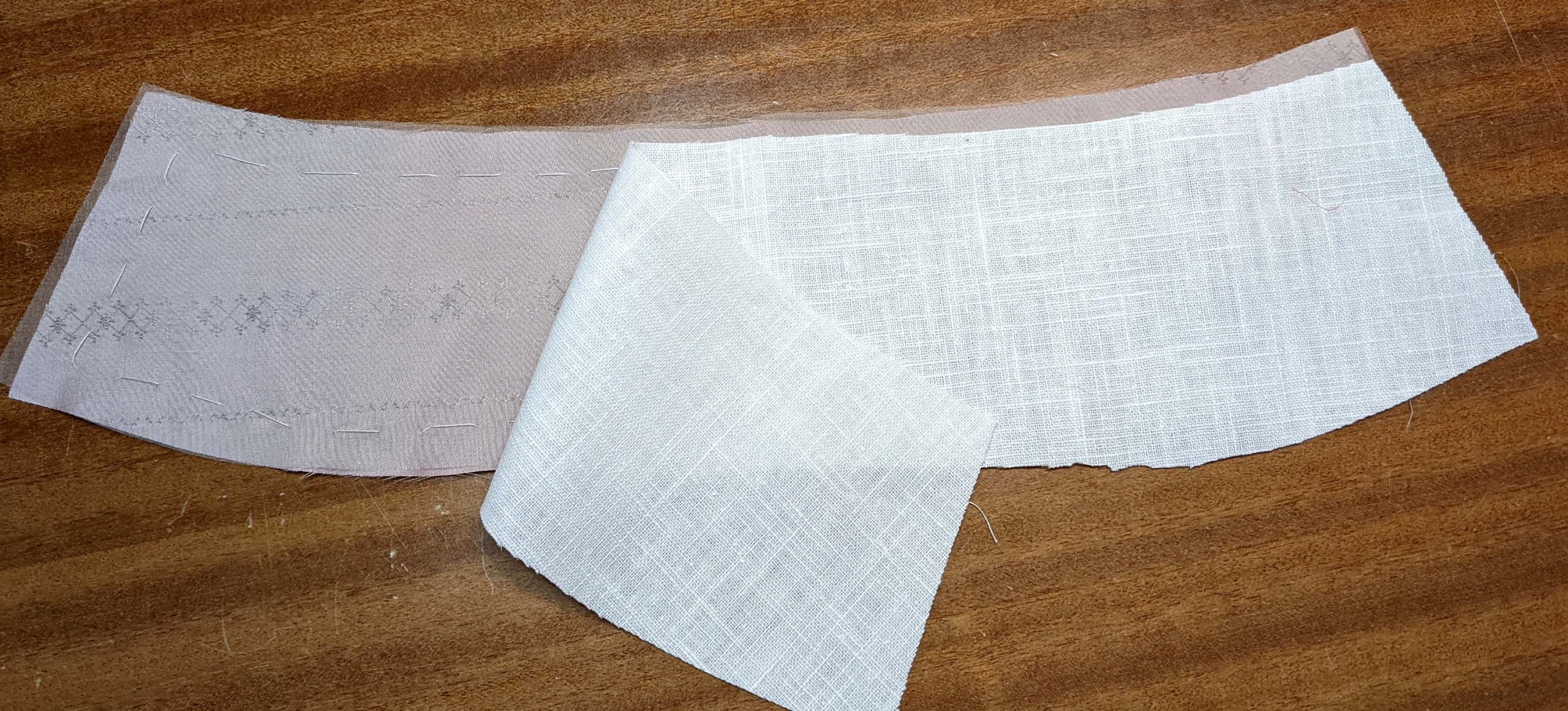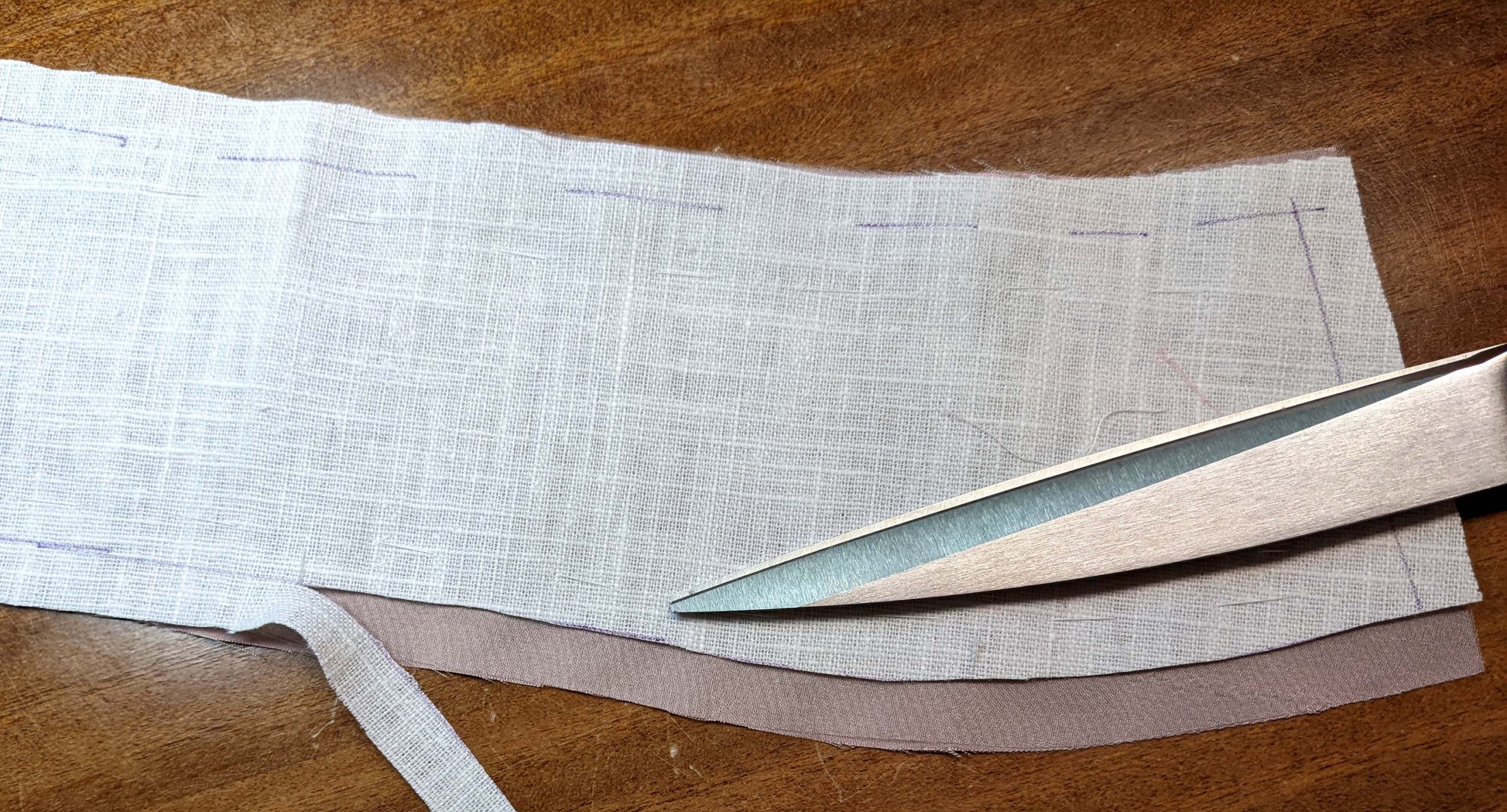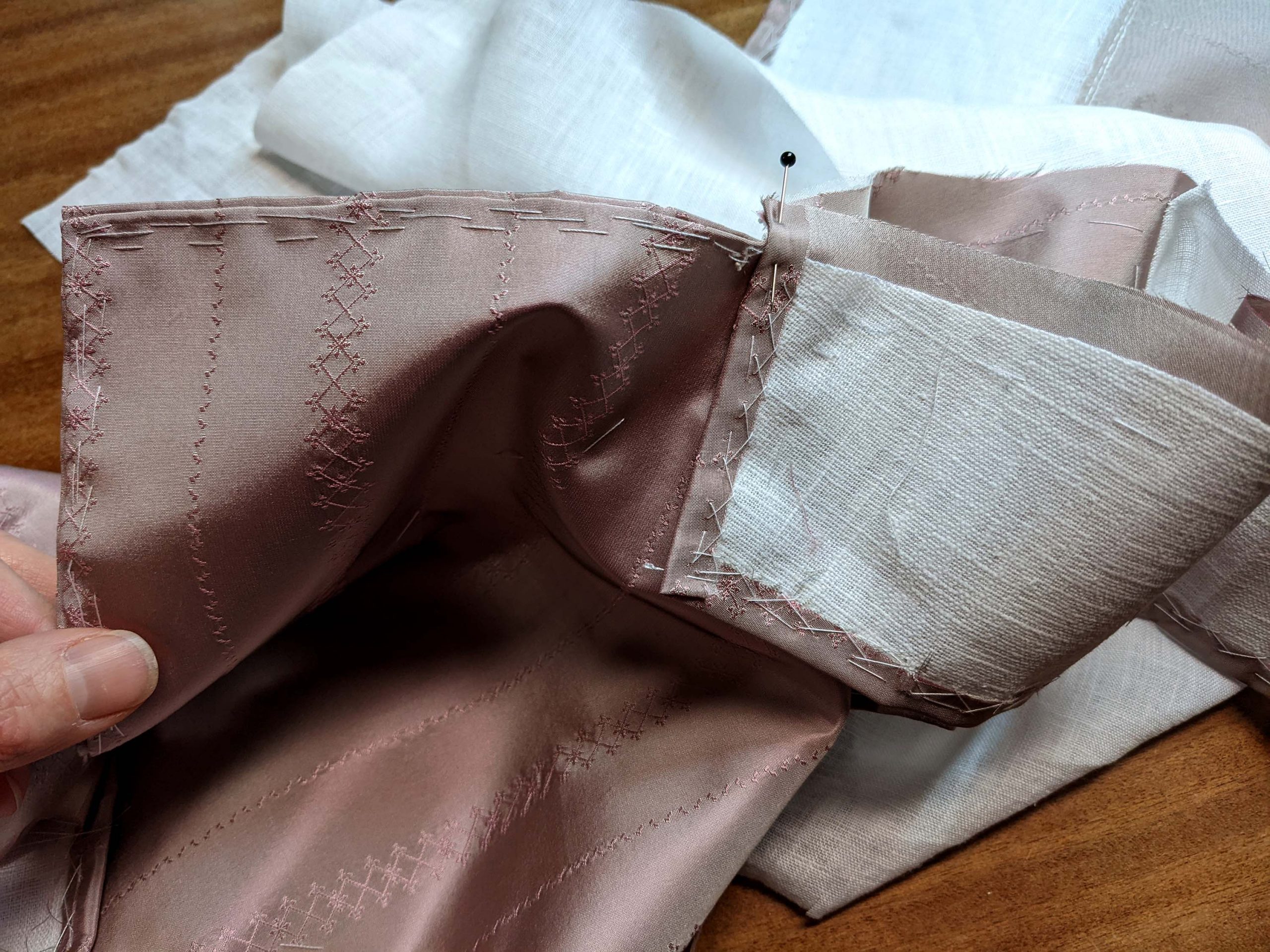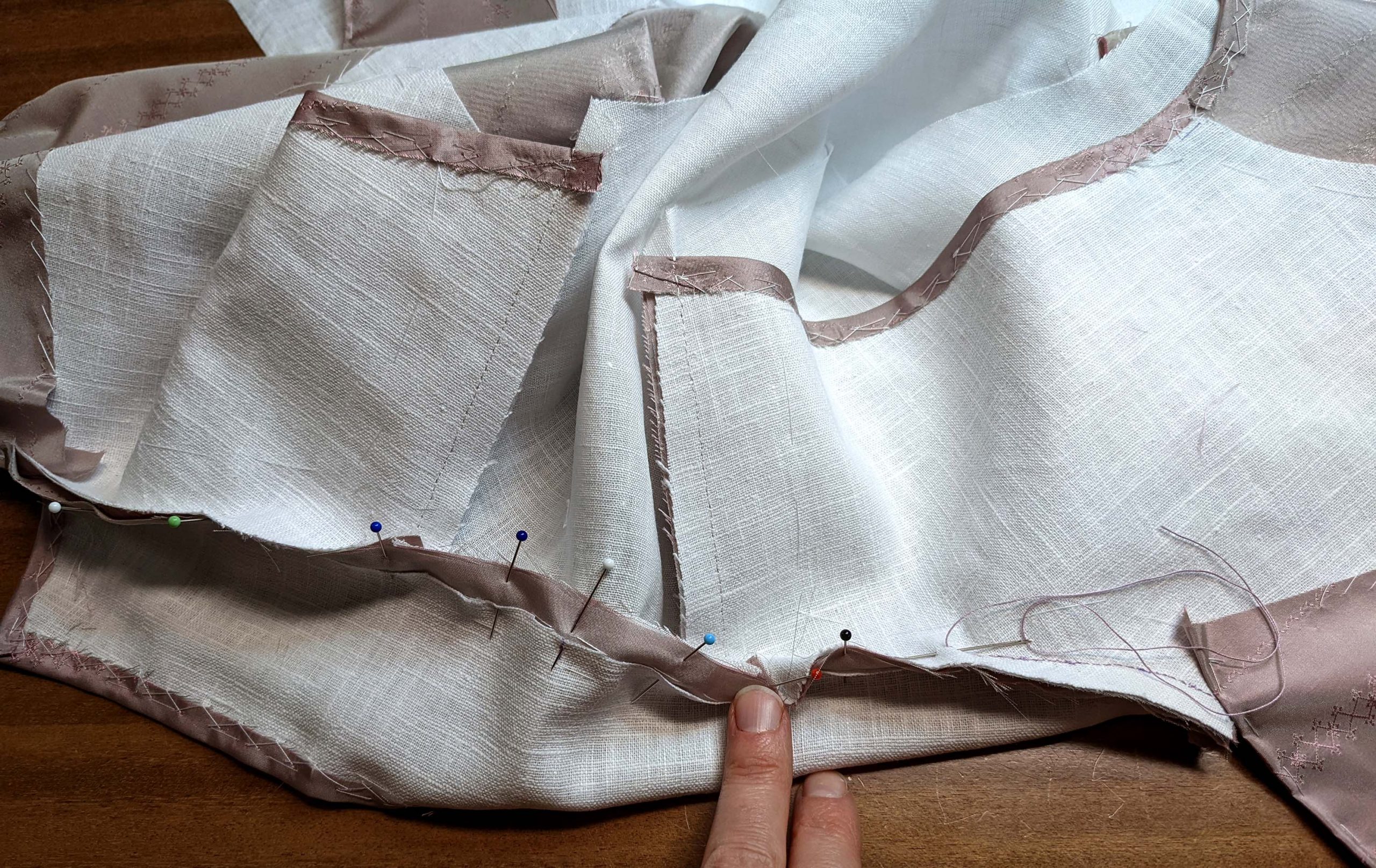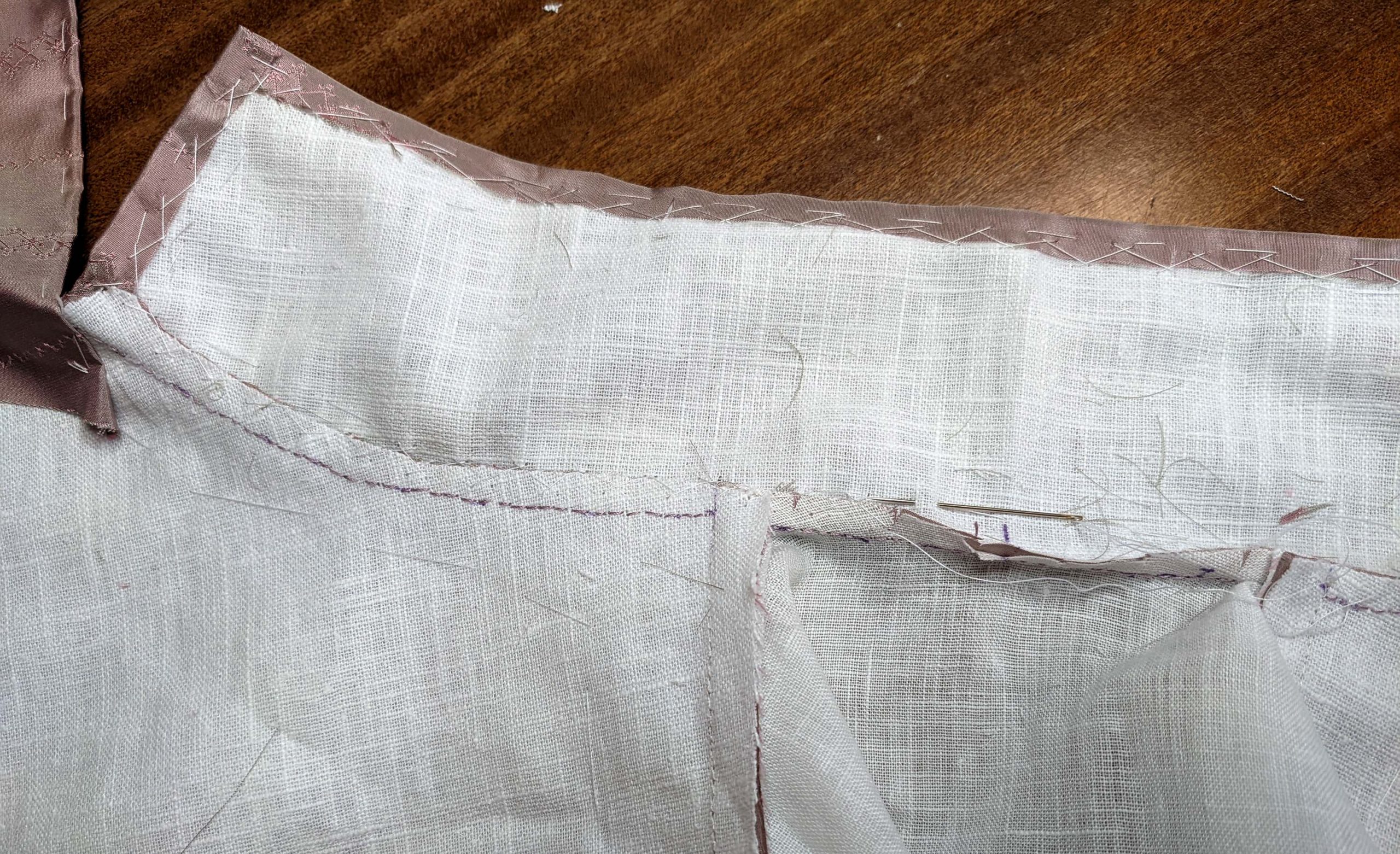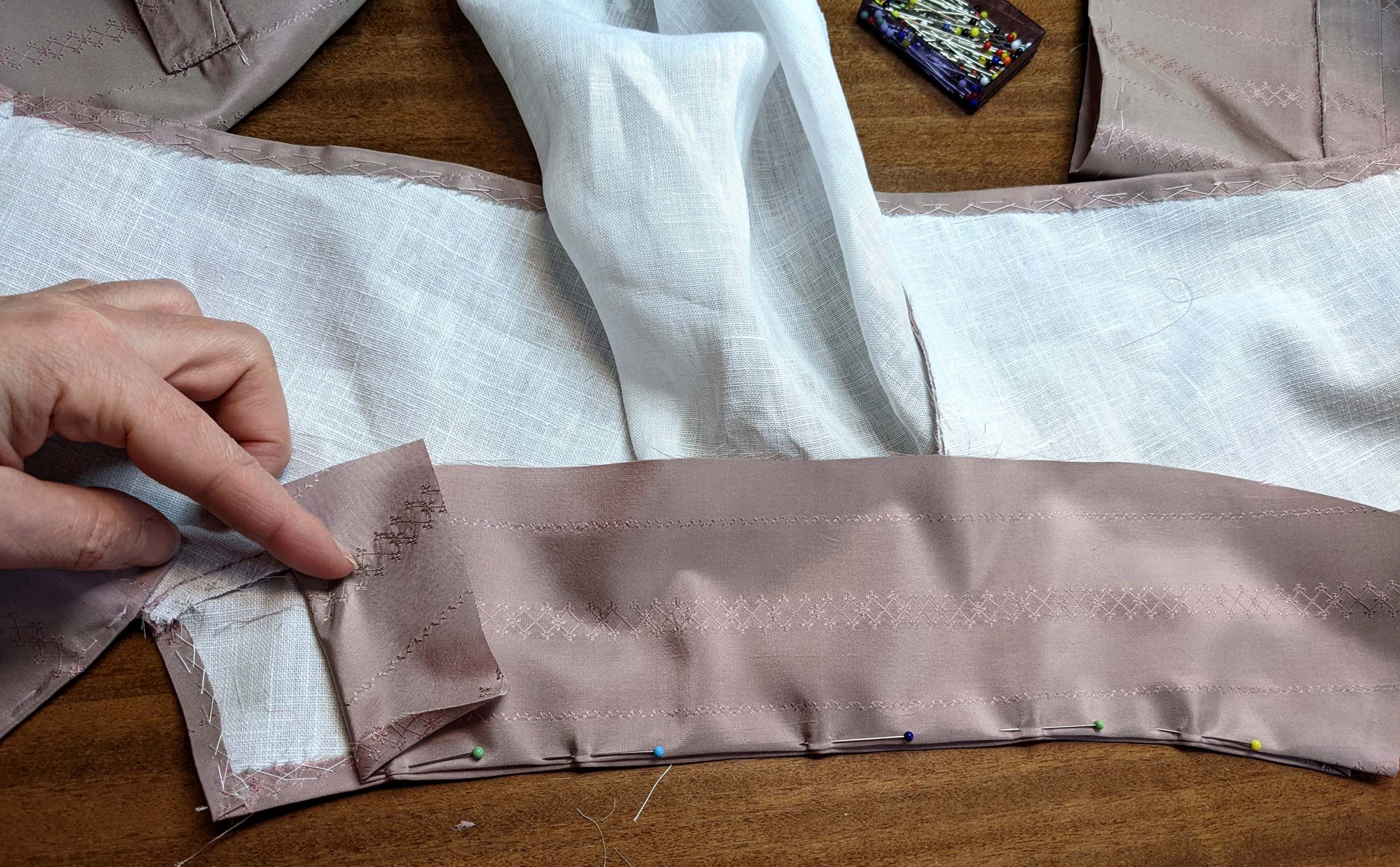(10) The gusset and waitband lining:

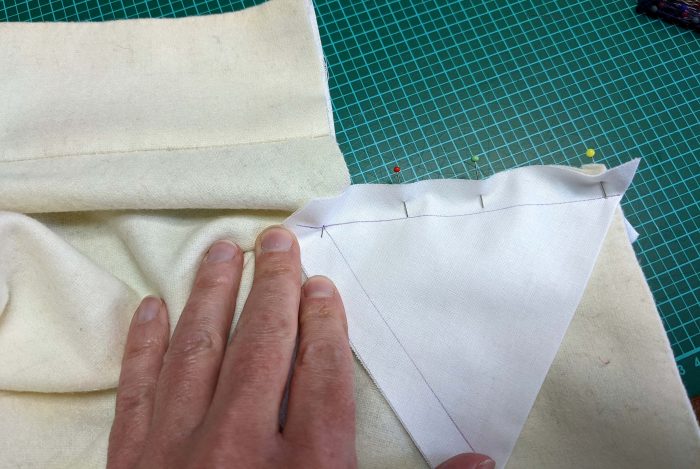
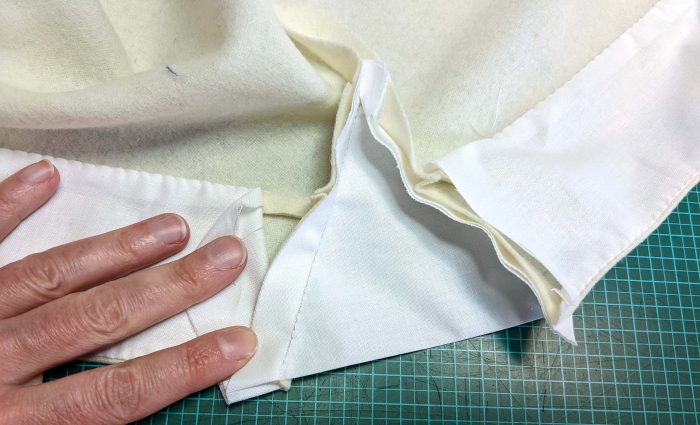
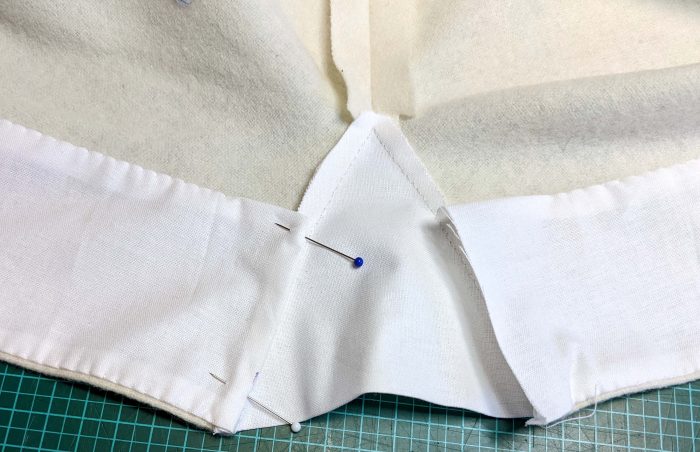
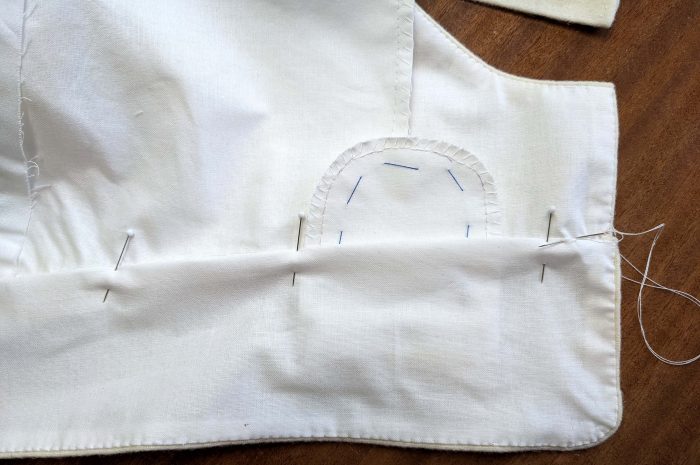
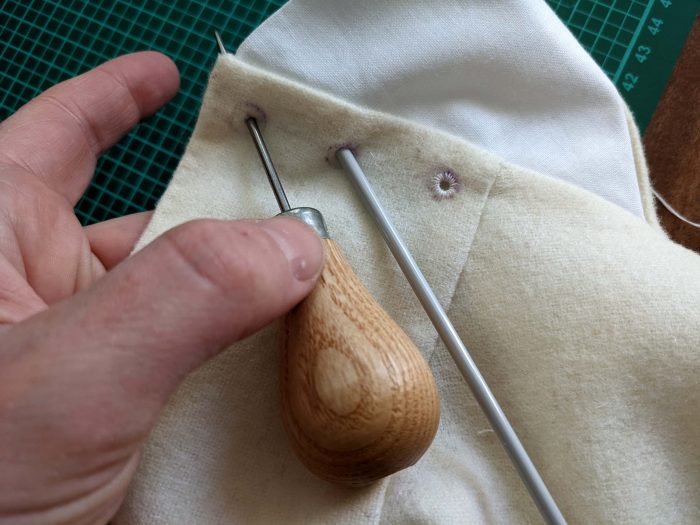

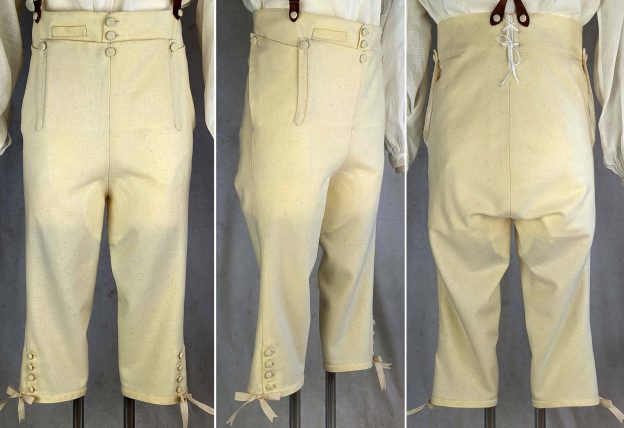
(10) The gusset and waitband lining:







My latest pattern #0222, the fall front breeches around 1800, are hand-sewn in the instructions. Sometimes it has to be quick and easy, so I want to show you how you can easily sew the breeches mostly with the sewing machine.
So let’s start with our machine sewing project and basically stick to the original instructions.
Mark all the stitching lines on the front trousers (vent), fall front placket and on the underfall. Line up with the belonging stitching lines, right sides together and sew, stopping exactly at the mark.
Continue reading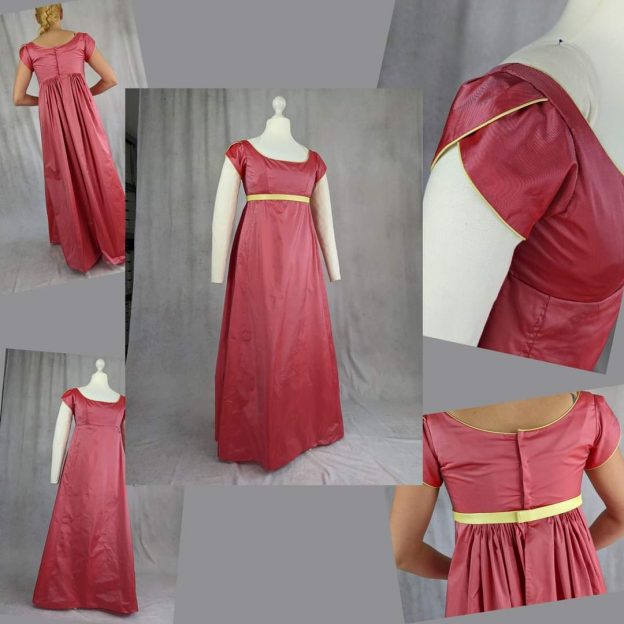
Inspired by Bridgerton Season 2, we had the idea of modifying the ball gown sewing pattern #0422 to be even more Briderton-like and documenting the sewing process here on the blog.
Click here if you are interested in purchasing the sewing pattern:
The dresses of the main characters in season 2 look very different from pattern 0422 at first glance, but on closer inspection they are relatively simple in cut. Using the lining pattern pieces, I’ll show you the basic changes.
First I made a sketch of how I imagined the dress and wrote down the details. It closes with hook and eye at the back and I’ve added an optional belt, the waistband of the original dress is omitted. The sleeves are given the tulip shape, seen on many dresses in the series. Neckline and sleeves are piped with contrasting fabric for a neat finish.
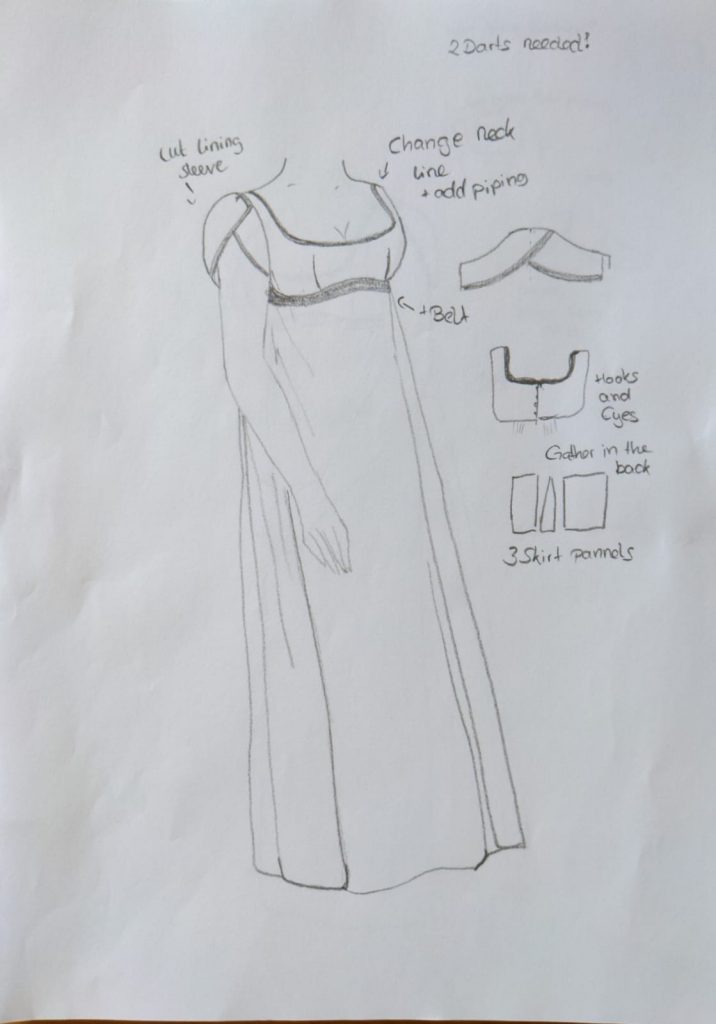
Let’s start with the original pattern and make the necessary changes. I lowered the neckline on the front and back and shaped the sleeve into the tulip shape as shown in the picture, don’t forget to mark the original center line to easily line up the two sleeve pieces later.
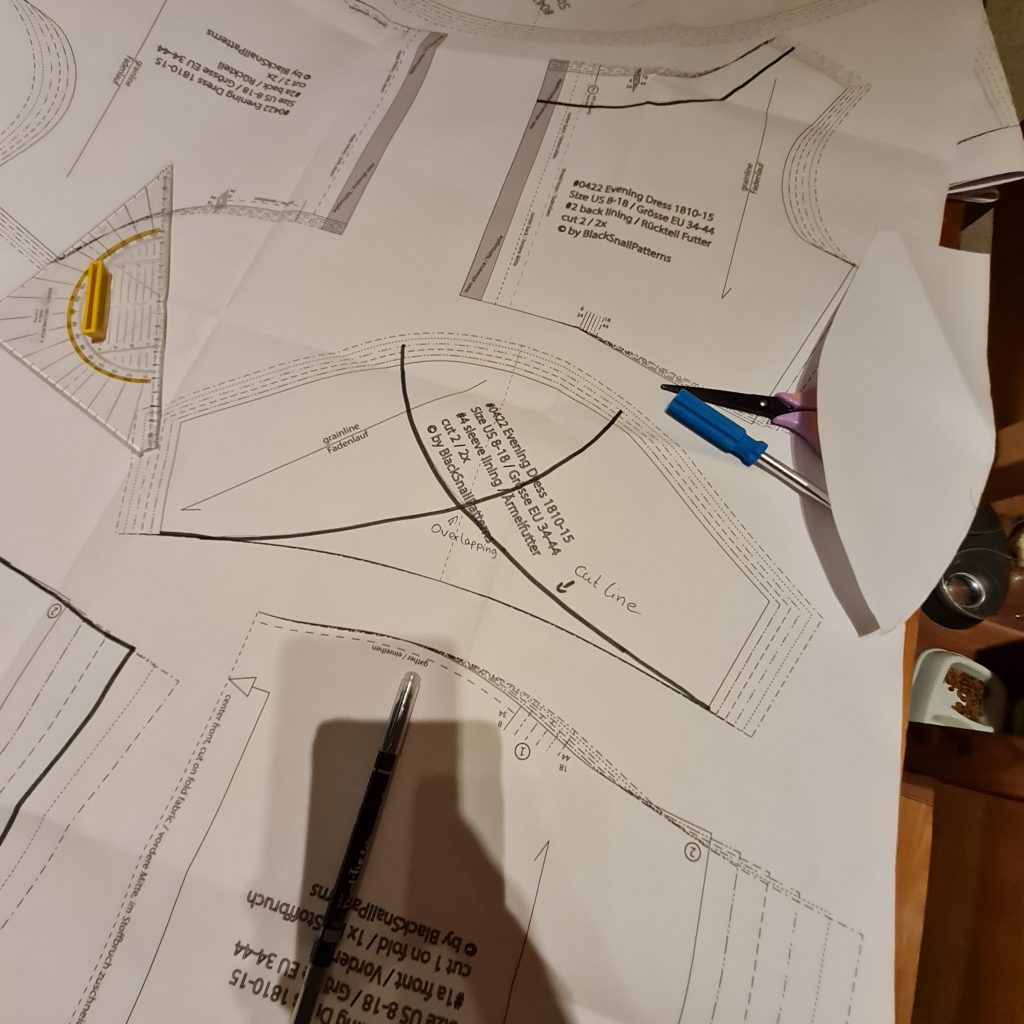
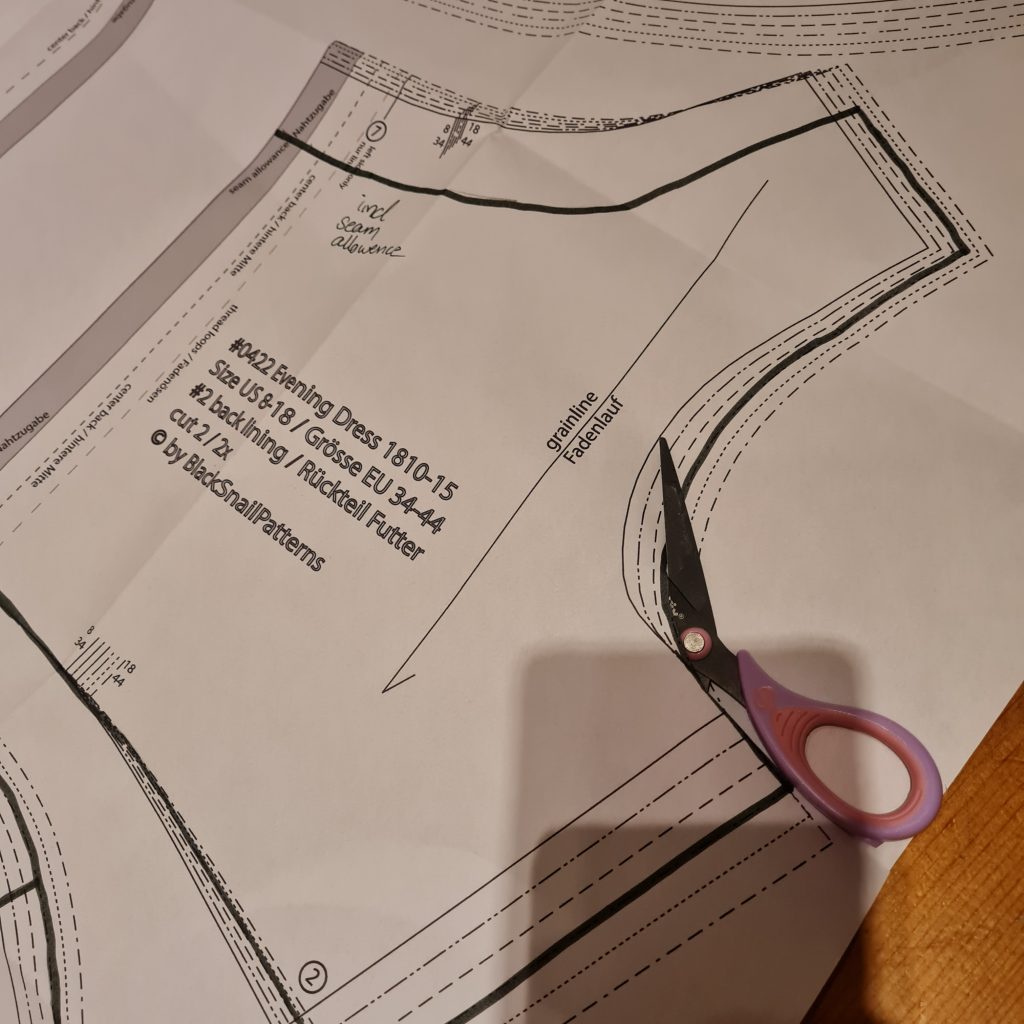
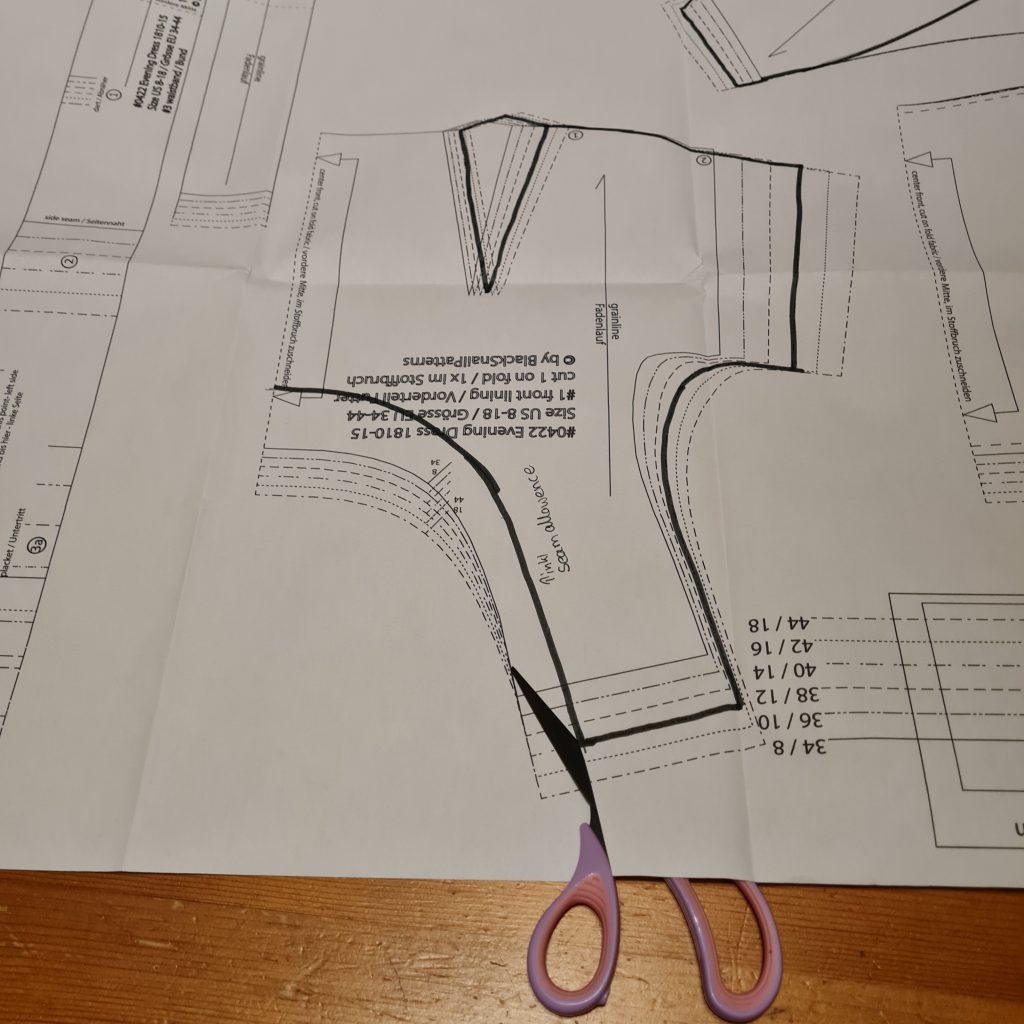

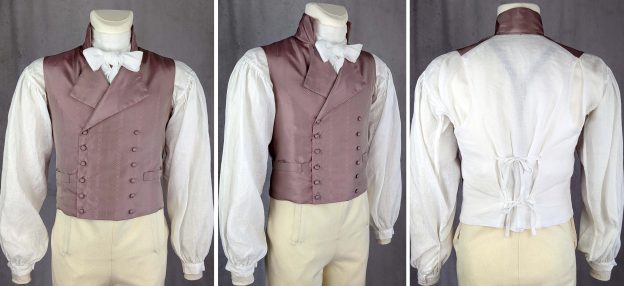
I managed to finish most of my new Regency menswear collection in time for the start of Bridgerton season 2, starting with the waistcoat in this blog post.
Shirts during the Regency period are still cut like last century shirts so no additional pattern is required, pattern #0521 fits perfectly.
As always, the blog post is intended as support for working with one of my patterns, mainly photos are shown for work steps that may be unclear.
Let’s start with point (1), cutting the vest out of the fabric! Not much fabric is needed for the waistcoat, I used an old silk dirndl apron from my stash.
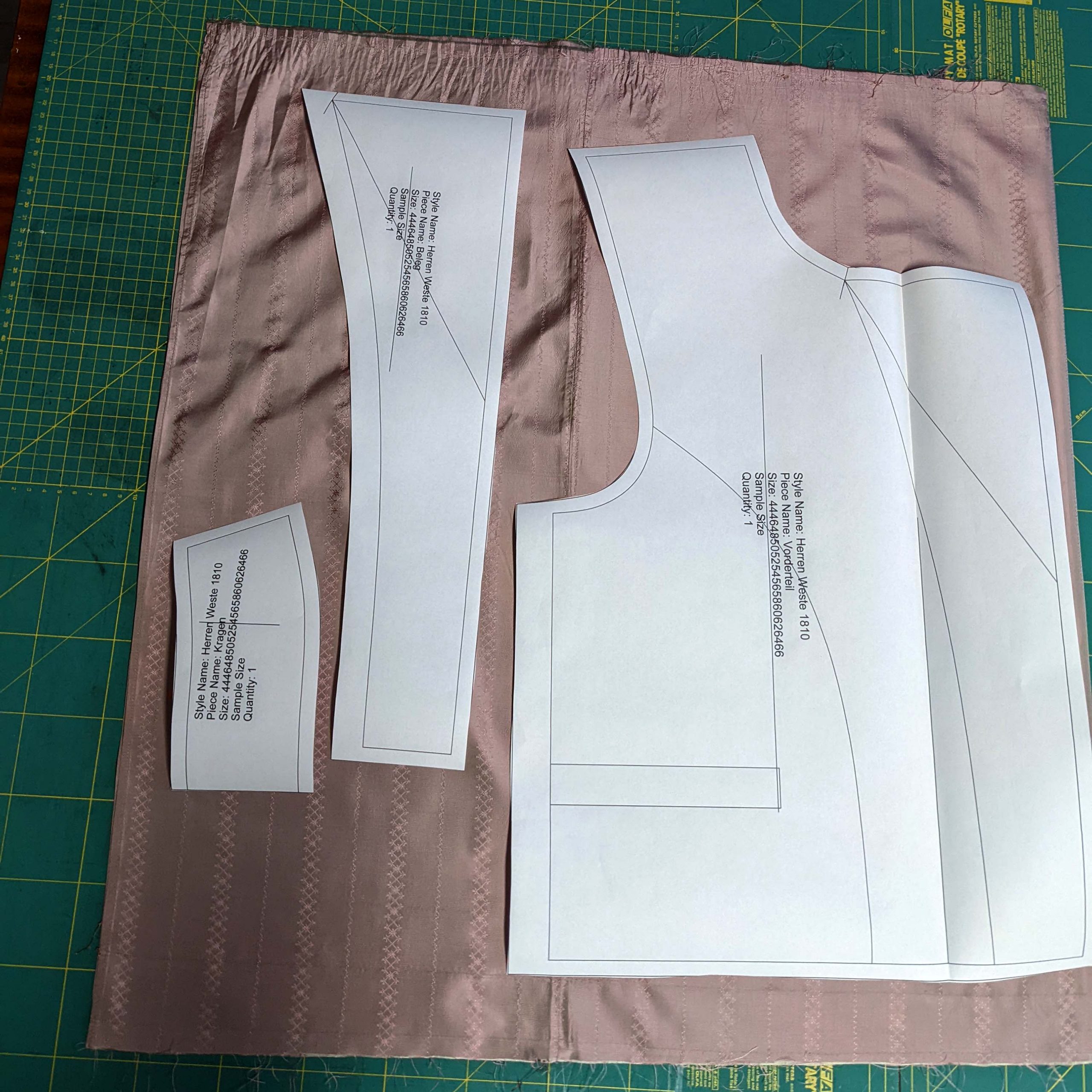
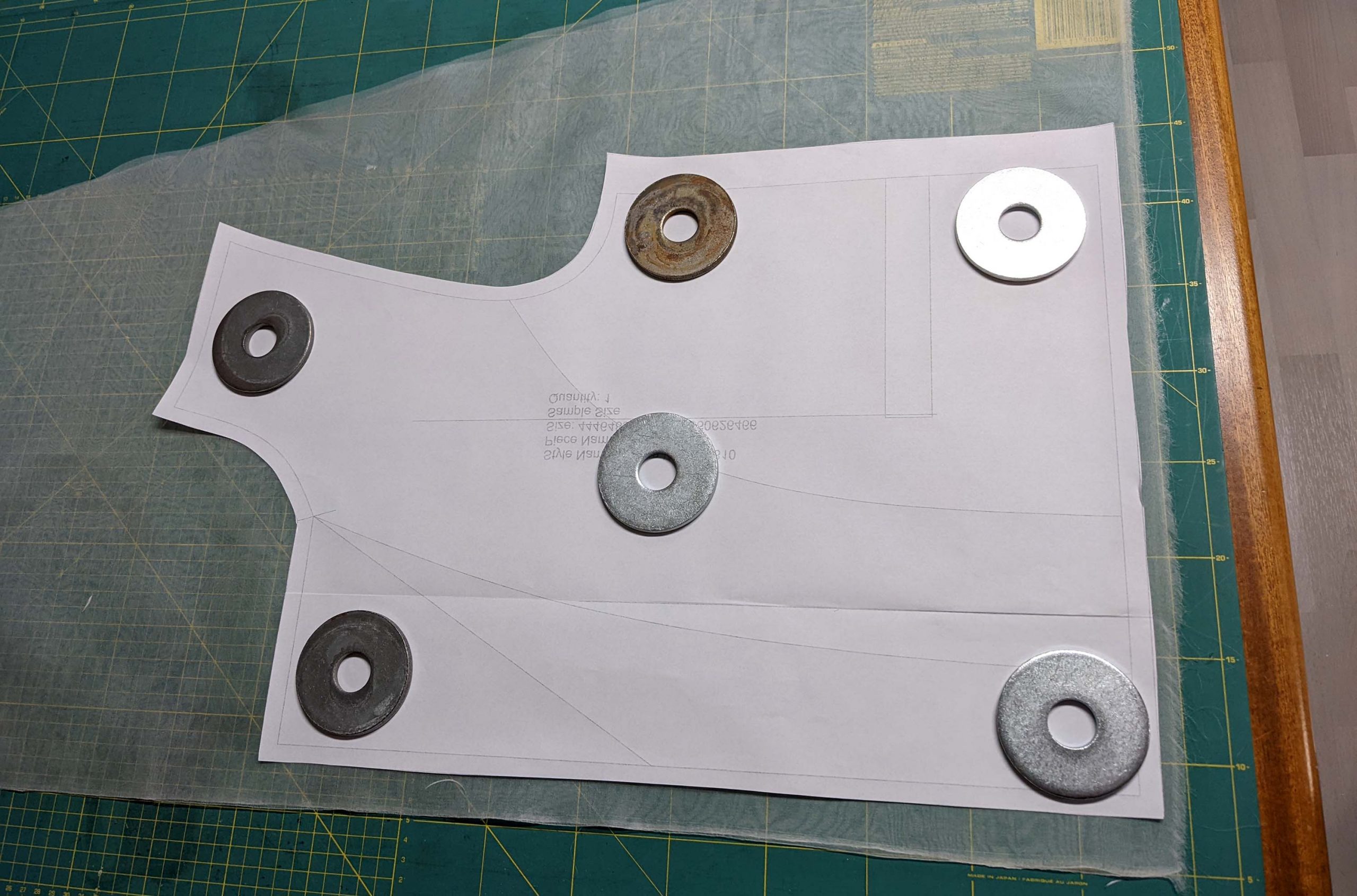
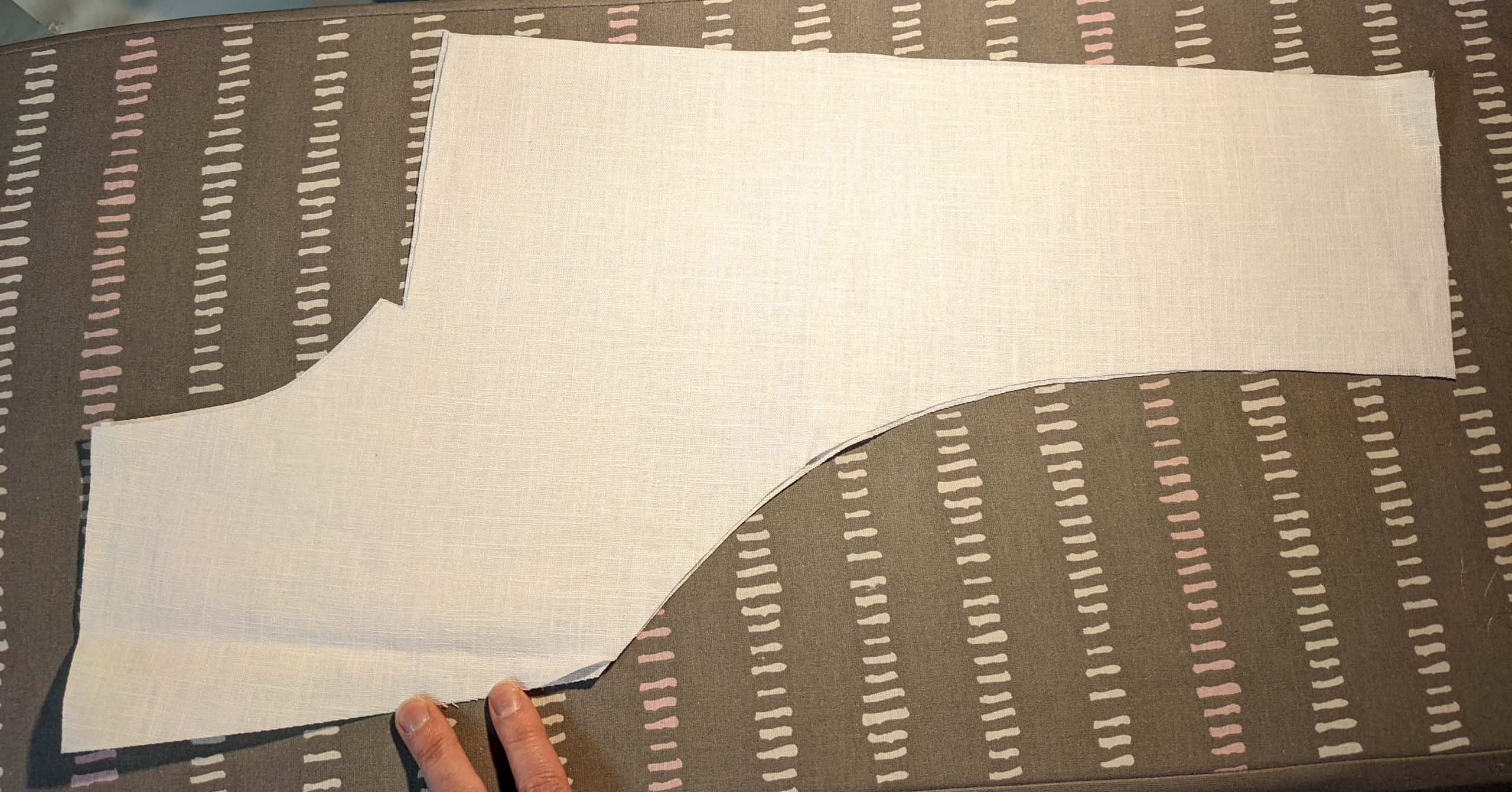
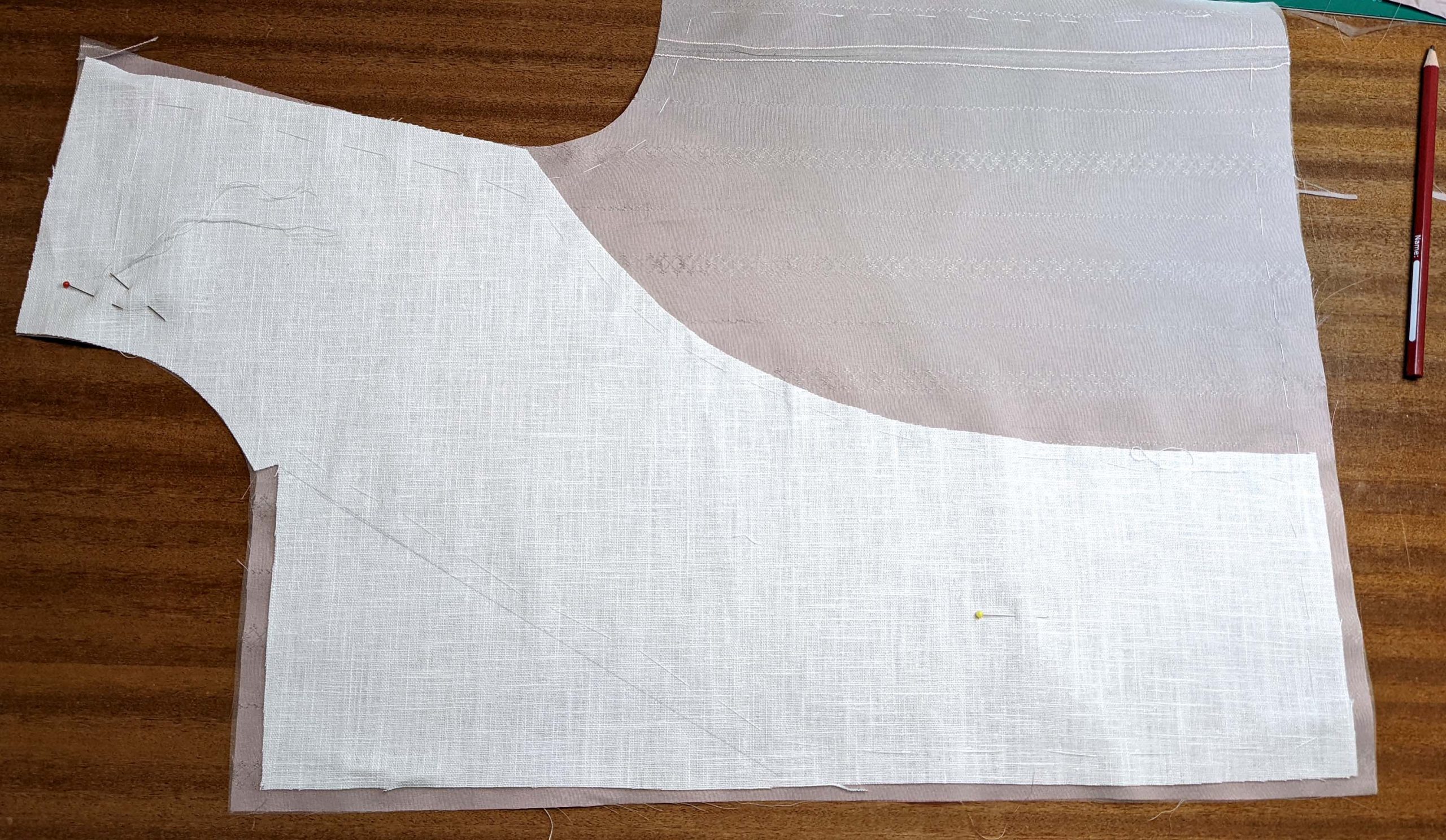

(6) The collar:
